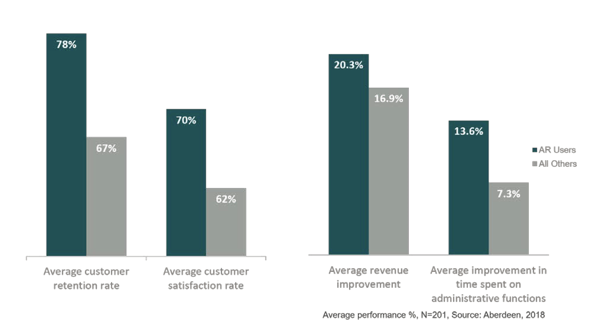The telecommunications industry isn’t alone. Organizations across almost every vertical are adopting new ways of working to comply with social distancing rules and keep their teams safe.
Augmented Reality (aka AR) is coming to the rescue as a means to business continuity. (Here’s a great story from an industrial company that adopted remote service globally in just two weeks)
AR-enhanced solutions for telecommunications field services and remote assistance aren’t new or suddenly the right solution because of the current COVID-19 restrictions affecting in-home services.
It’s also not a result of digital transformation – a buzz word you either love or hate – describing the journey to a connected enterprise with outcomes like servitization, automation, on-demand anything and a 360-degree customer experience.
So what are the real drivers of AR for telecommunications applications?
Labour challenges (like turnover) lower customer satisfaction
AR applications extend well past enabling the virtual visits being rolled-out by operators. When applied properly to improve the effectiveness of in-home service, it can have a profound effect on customer satisfaction.
I recently came across this study by Aberdeen released in 2018 outlining ‘How Best in Class Use AR for Service Management’.
Not surprising, turnover was one of the main workforce problems reported by operators. On average, technician turnover reached 31.5%. More surprising was how strongly high turnover was linked to lower first-time fix rates and customer retention.
Consider these statistics:
Organizations with higher-than-average turnover see a 14% lower first-time fix rate compared to firms with lower turnover (52% compared to 66%)
An increasing number of service technicians are contracted (an average of 26.4%)High-turnover companies also see customer retention at a mere 60%, compared to 72% for those with lower-than-average turnover
AR-enhanced remote assistance tools can mitigate the need for on-site visits, while training using augmented reality can improve the onboarding process and knowledge share – all helping to reduce turnover and ensure first-time fix rates are maintained.
Technology complexity requiring specialized training and education
As my colleague David Baxter referenced in a recent article, the technology underpinning the telecommunication industry is complex. Network complexities aside, the home network can also be a convoluted environment for troubleshooting.
This complexity requires highly skilled technicians who are trained on every version of customer premises equipment, security settings, causes of possible interference and legacy protocols that can affect performance.
Nuanced ‘cause and effect’ insight is residing in the heads of your experienced staff.
I’ve heard first-hand experienced techs in particular will resist workflows and solutions but AR represents an opportunity for training and education – particularly for new or contracted technicians.
AR-enhanced solutions for remote service can also be used quite effectively to leverage the know-how of experienced field veterans without needing an in-home visit.
The strongest applications for this technology doesn’t override your team’s knowledge, it instead takes the effectiveness up a notch.
Growing demand for customer self-service solutions – and it greatly affects satisfaction
Did you know telecom customer satisfaction is significantly higher for service providers offering tools to proactively troubleshoot problems as versus those relying on subscribers phoning in an issue?
JD Power just released a study clearly demonstrating the correlation of self-service channel availability to customer satisfaction. It also points out the cost savings related customer service phone calls at a price of $7-12 per call.
Interestingly, “More than two-thirds (69%) of telecom customers attempt to resolve their own technical issues before resorting to scheduling a visit with an in-home service technician. However, those who attempt but fail to resolve their issues before having a technician visit are significantly less satisfied than those who simply scheduled a technician visit without first trying to troubleshoot.”
AR-enhanced applications for customer self-service are particularly compelling – take a look at this.
The case for AR to improve in-home service is compelling - for both field operations and self-service
Again referencing the Aberdeen study, best in class operators report early success from the adoption of AR-enhanced solutions, “AR-enhanced service improvements provide a host of benefits, including happier customers, decreased on-site service costs, and recovered revenue previously lost to workforce strain. Looking ahead, we can begin to understand the idea of an AR-powered service environment: helping service leaders edge closer to a “failure free” environment, ensuring maximum customer retention, and increasing service value.”

If you ask my take, self-service tools using AR will be the norm within 6-12 months.
Similar to the rapid adoption of touchscreens in cars, the value versus investment is a no-brainer. It makes good business sense, streamline processes, help consumers and let’s be honest – I haven’t even mentioned the cool factor.





